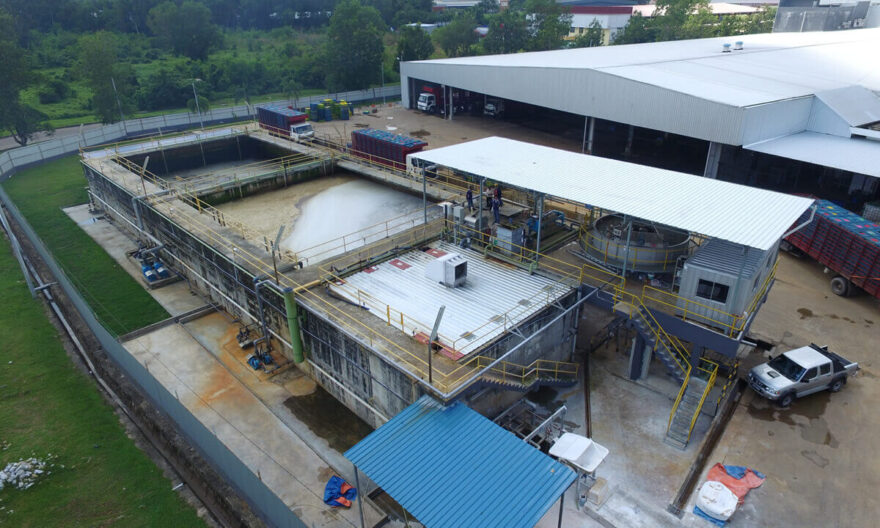
Clean water keeps industries running, but many processes produce waste. Factories, plants, and refineries create used water that carries chemicals, metals, oils, and heat. This is known as industrial wastewater treatment malaysia. Left untreated, it harms rivers, soil, and even drinking supplies. That’s why managing this waste the right way matters—for health, safety, and the environment.
Whether you run a factory, manage a site, or build systems, knowing how to treat wastewater can help you make better choices. In this guide, you’ll learn the best treatment methods, how they work, and what to consider, especially for industrial wastewater treatment Malaysia solutions.
Why Treat Industrial Wastewater?
Industries use water in cleaning, cooling, processing, and production. When finished, the water often contains harmful substances. If discharged without treatment, this water pollutes natural systems and breaks local laws.
Treatment removes or reduces harmful parts in wastewater so the water can be reused or safely released. Many regions now require treatment before discharge, and fines apply for non-compliance.
Classifying Industrial Wastewater
Different industries produce different waste. Understanding what you’re dealing with helps pick the best treatment method.
Key Types of Waste
- Organic waste – From food, paper, or chemical processing
- Heavy metals – From mining, electronics, or plating
- Oils and grease – From auto shops and machinery plants
- Toxic chemicals – From paint, rubber, or plastic
- High temperature waste – From power stations or metalwork
Every type needs a tailored method to treat it well.
Main Treatment Stages
Industrial wastewater treatment follows a step-by-step flow. Each stage focuses on removing specific problems.
1. Primary Treatment – Remove Solids
This stage removes large particles.
- Screens trap debris like plastic or wood
- Grit chambers let sand and gravel settle
- Sedimentation tanks allow solids to drop to the bottom
This stage prepares water for deeper treatment by reducing the load.
2. Secondary Treatment – Break Down Organic Matter
Biological processes take over here. Microbes digest organic waste.
- Activated sludge systems stir air into water to feed bacteria
- Biofilters pass water over surfaces filled with helpful organisms
- Aerated lagoons use wind or machines to mix water and support bacterial growth
This method works well for food, pulp, and textile industries.
3. Tertiary Treatment – Polish the Water
This advanced stage targets fine particles, chemicals, and pathogens.
- Sand filters trap small solids
- Activated carbon removes odours and toxins
- Membrane filters block microscopic items
- UV light kills germs without chemicals
Industries near sensitive areas often use this stage before release.
Physical Treatment Methods
These methods rely on physical forces to separate waste.
1. Filtration
- Filtration uses cloth, sand, or membranes to trap particles. It’s useful at the end of treatment or to polish reused water.
2. Flotation
- In dissolved air flotation (DAF), air bubbles attach to solids and float them to the top for removal. This works well for oily waste.
3. Sedimentation
- Heavy solids sink in still tanks. This method is simple but effective when paired with other steps.
Chemical Treatment Methods
Chemicals react with waste to clean the water.
1. Coagulation and Flocculation
- Added chemicals cause small particles to stick together and form clumps (flocs). These settle or float for removal.
2. pH Adjustment
- Some waste is too acidic or basic. pH balance helps neutralise the water before discharge or further treatment.
3. Precipitation
This method removes metals. Chemicals turn dissolved metals into solid particles, which are then removed by settling or filtration.
Summary of Common Treatment Methods
The table below compares key treatment techniques by method and use:
| Method Type | Process Name | Best For |
| Physical | Filtration | Polishing, small solids |
| Physical | Sedimentation | Heavy particles |
| Physical | Flotation (DAF) | Oil, grease, and light solids |
| Chemical | Coagulation/Floc | Small particles, turbidity |
| Chemical | Precipitation | Heavy metals |
| Chemical | pH Neutralisation | Acidic or basic waste |
| Biological | Activated Sludge | Organic matter |
| Biological | Biofilters | Odours and biodegradable waste |
| Advanced | UV Disinfection | Germ removal |
| Advanced | Membrane Filtration | Micro-pollutants |
Biological Treatment Methods
These rely on living organisms to clean water.
Aerobic Processes
Bacteria digest organic waste in the presence of oxygen. These are efficient and widely used.
- Activated sludge
- Trickling filters
- Oxidation ponds
They work well for industries with high levels of biodegradable material.
Anaerobic Processes
These work without oxygen. Microbes break down waste and produce methane, which can power the plant.
- Anaerobic digesters
- Upflow anaerobic sludge blanket (UASB)
These suit the food, dairy, and palm oil industries and lower energy costs.
Choosing the Right System
Choosing the best method depends on what’s in your water, your site’s size, and your goals.
Key Factors to Consider
- Type of Waste – Oil, metal, or organic? Each needs different treatment.
- Flow Volume – How much water do you treat each day?
- Location – Do you discharge into rivers, sewers, or reuse the water?
- Regulations – Local rules vary. Always check discharge limits.
- Budget – Some systems cost more to run or maintain.
Pre-treatment Options
Sometimes, waste must be treated before it reaches the main plant. This protects systems from overload or damage.
- Oil separators
- Grease traps
- Equalisation tanks
These steps ensure smoother treatment ahead.
Industrial Wastewater Treatment in Malaysia
In Malaysia, water laws are strict. Factories must meet discharge limits under the Environmental Quality Act. Failing to treat industrial wastewater leads to heavy penalties.
Malaysia’s Common Challenges
- High rainfall causes dilution and overflow
- Diverse industries create complex waste
- Remote plants lack trained staff or resources
- Small industries struggle with cost and setup
Because of this, industrial wastewater treatment Malaysia systems must be tailored to each site. Mobile plants, compact systems, and plug-and-play units grow in demand.
Smart Monitoring Helps
Digital tools now track treatment quality in real-time. Sensors watch flow, pH, oxygen, and chemical levels. Alerts signal problems fast.
This helps plant managers respond quickly and stay within legal limits.
Reuse and Recycling
Many industries now recycle treated water. This saves costs and supports green goals.
Common Uses of Treated Water
- Cooling towers
- Floor washing
- Garden or landscaping use
- Toilet flushing
Advanced systems can even reach drinking-water standards with further treatment.
Sludge Handling
Treatment creates sludge—a thick paste full of waste. It must be handled safely.
- Dewatering presses reduce volume
- Drying beds use sun or air to harden waste
- Composting or landfilling removes the final solids
Some sludge contains valuable metals or nutrients. In these cases, recovery and reuse are possible.
Sludge Disposal and Recovery Options
Here’s a summary of sludge management choices:
| Method | Process | Notes |
| Dewatering | Press or centrifuge | Reduces weight for easier handling |
| Drying Beds | Air-dry sludge in open beds | Simple but needs space and time |
| Landfill | Move to approved sites | Must meet safety rules |
| Composting | Mix with organic waste | Can enrich the soil if safe |
| Metal Recovery | Extract metals from sludge | Common in mining or plating plants |
Final Thoughts
No single treatment works for every case. The best system fits the waste type, size, and discharge rules. Combining methods often gives better results. Begin with accurate data: understand your waste. Then, create a solution that is intelligent, safe, and scalable.
Conclusion
Industrial wastewater causes serious damage when left untreated. But with the right tools, you can clean it safely, meet rules, and even reuse the water. Whether you manage a small workshop or a large factory, strong systems matter.
If you work in industrial wastewater treatment Malaysia, know that options are growing. From compact systems to digital tools, the field is moving fast. Choose solutions that fit your waste, your space, and your team’s skills.
Clean water protects your business and your community. Act early. Treat right. Stay compliant.




